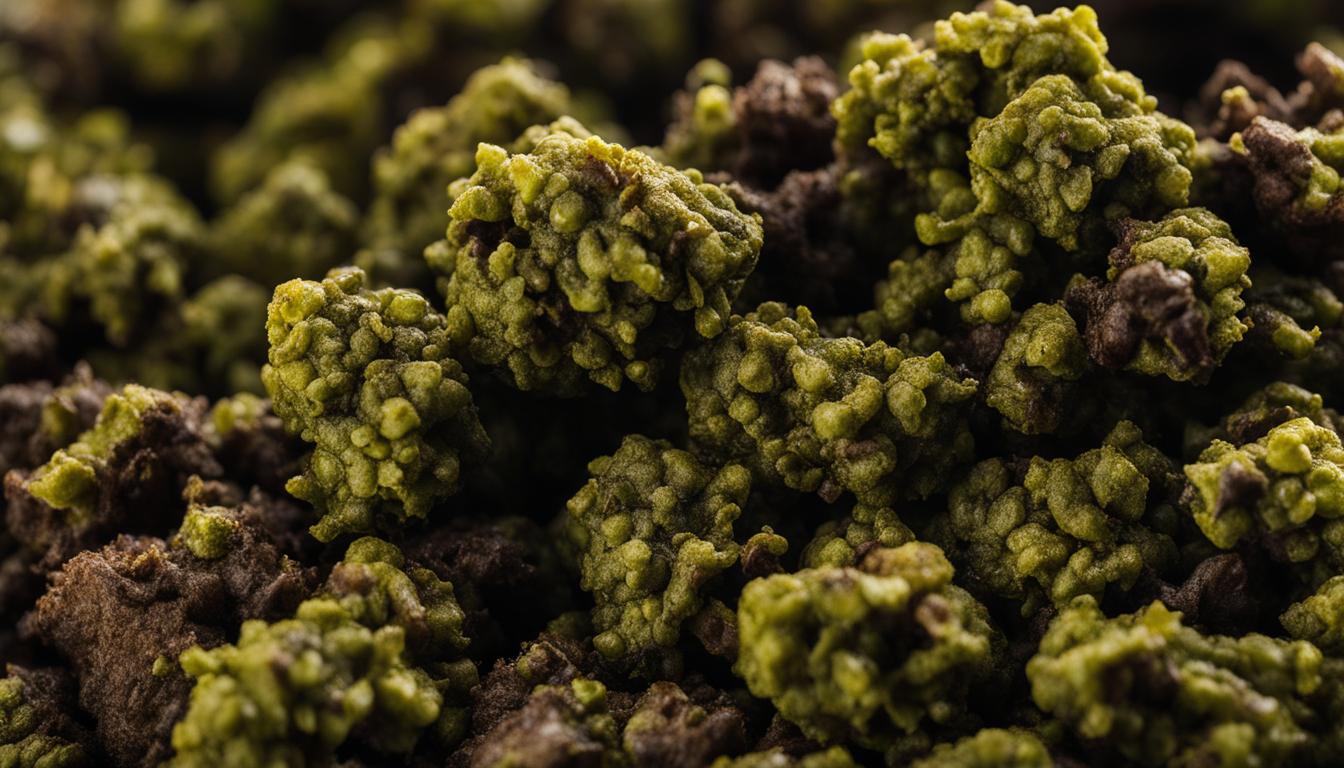Understanding Mastitis in Dogs
Mastitis in dogs is an infection of the mammary glands that usually occurs in female dogs nursing a new litter of puppies. It is important to be aware of the different types of mastitis and the symptoms to watch for in order to identify and address the condition promptly.
Types of Mastitis
There are several types of mastitis that can affect dogs:
| Type | Description |
|---|---|
| Acute Mastitis | This type is characterized by sudden swelling, heat, and pain in the mammary gland. The milk may appear abnormal, and the mother may exhibit signs of lethargy (PetMD). |
| Septic Mastitis | Septic mastitis is accompanied by sudden swelling, heat, pain, abnormal milk coloration, and changes in the mother, such as lethargy, changes in appetite, and fever. It is typically caused by bacterial infection (PetMD). |
| Chronic or Subclinical Mastitis | This type involves long-term inflammation of the mammary tissue without obvious clinical signs like swelling or warmth. |
| Non-septic Mastitis | Non-septic mastitis refers to inflammation of the mammary tissues without a bacterial or fungal cause. |
| Gangrenous Mastitis | Gangrenous mastitis is characterized by a black or bruised appearance of the affected teat and surrounding tissues. The milk may be blood-tinged or bloody. The mother may also exhibit symptoms such as vomiting, decreased appetite, fever, and changes in blood pressure. |
Symptoms to Watch For
Being familiar with the symptoms of mastitis in dogs is essential for early detection and treatment. Some common signs to watch for include:
- Swelling or inflammation of the mammary gland
- Heat and pain around the affected area
- Abnormal milk coloration
- Lethargy and changes in appetite in the mother
- Dark purple or black appearance of the mammary gland in severe cases
It is important to note that mastitis in dogs can be life-threatening if not treated promptly. Therefore, it is crucial to contact a veterinarian immediately if any changes are noticed in the dog’s mammary glands, as the infection can spread rapidly and lead to severe illness or even death.
Diagnosing mastitis in dogs typically involves a physical examination, complete blood cell count, milk sample analysis, and potentially bacterial culture to confirm the diagnosis and determine the most effective treatment (VCA Canada).
To learn more about the causes, risk factors, treatment options, prognosis, and preventive measures for mastitis in dogs, continue reading our comprehensive guide on dog mastitis treatment.
Causes and Risk Factors
To understand the causes and risk factors associated with mastitis in dogs, it is important to recognize that mastitis is an infection of the mammary glands that typically occurs in female dogs nursing a new litter of puppies. Let’s explore the primary causes and risk factors that contribute to the development of mastitis.
Trauma and Bacterial Infections
The most common cause of mastitis in dogs is trauma to the teat, allowing bacteria to enter and cause infection. This trauma can occur when puppies scratch or bite the mother’s nipples, leading to small wounds that provide an entry point for bacteria (Purina UK). In addition to trauma, bacterial infections such as Escherichia coli, Staphylococcus sp., and Streptococcus sp. can also cause mastitis in dogs.
Unhygienic conditions can also contribute to the development of mastitis, even without teat damage. When the mammary glands are exposed to bacteria and irritants due to poor hygiene, the risk of infection increases (Purina UK). It is important to provide a clean and sanitized environment for the nursing mother dog to minimize the risk of infection.
Unhygienic Conditions
Mastitis can also occur in dogs that are not pregnant or nursing. In these cases, it is important to investigate potential underlying causes, such as cancer of the mammary glands. If a non-nursing dog develops mastitis, it requires urgent veterinary attention to identify and address the underlying cause.
Understanding the causes and risk factors associated with mastitis in dogs can help dog owners take preventive measures and seek timely veterinary care. If you notice any signs of mastitis in your dog, it is important to consult with a veterinarian for an accurate diagnosis and appropriate treatment. Prompt attention and proper care can help ensure a positive outcome for your dog’s health. For more information on treatment options, refer to our article on dog mastitis treatment.
Diagnosing Mastitis in Dogs
When it comes to diagnosing mastitis in dogs, there are several methods that veterinary professionals employ to confirm the presence of this condition and determine the most appropriate treatment plan. The diagnostic process typically involves a combination of clinical examination and milk sample analysis.
Clinical Examination
The first step in diagnosing mastitis is a thorough clinical examination performed by a veterinarian. During this examination, the vet will palpate the mammary glands to assess for signs of inflammation, pain, or swelling. They will also observe any changes in the appearance or texture of the affected mammary glands. In some cases, the vet may recommend a complete blood cell count (CBC) or other blood tests to confirm the presence of infection (Purina UK).
Milk Sample Analysis
Milk sample analysis is another important diagnostic tool used to confirm the presence of mastitis in dogs. The veterinarian will collect a sample of milk from the affected mammary gland(s) and examine it for the presence of pus, bacteria, and other abnormalities. This analysis helps determine the severity of the infection and guides the selection of the most effective antibiotic treatment (VCA Canada). Additionally, a bacterial culture may be performed to identify the specific bacteria causing the infection, which can further inform the choice of antibiotics (VCA Hospitals).
It’s important to note that in some cases, additional tests such as ultrasounds or blood tests like a complete blood count (CBC) may be recommended to rule out other conditions or assess the severity of the infection (WagWalking). An ultrasound can help detect any abnormalities, such as tumors or abscesses, that may be contributing to the mastitis (American Kennel Club).
By combining the findings from the clinical examination and milk sample analysis, veterinarians can make an accurate diagnosis of mastitis in dogs. This diagnosis is crucial for determining the appropriate treatment plan, which may involve the use of antibiotics, pain relief medications, hand milking, or surgical intervention. For further information on treatment options, refer to the section on dog mastitis treatment.
Remember, if you suspect that your dog may have mastitis, it is essential to seek veterinary attention promptly for an accurate diagnosis and appropriate treatment. Early detection and intervention can help prevent complications and promote a speedy recovery for your furry companion.
Treatment Options
When it comes to treating mastitis in dogs, prompt and appropriate treatment is essential to ensure the well-being of your furry companion. The treatment options for mastitis in dogs typically involve a combination of antibiotics, pain relief, and, in some cases, hand milking or surgical intervention.
Antibiotics and Pain Relief
The primary approach to treating mastitis in dogs involves the administration of antibiotics to combat the underlying bacterial infection. Antibiotics such as Clavamox or cephalexin are commonly prescribed to target the specific bacteria causing the infection (VCA Canada). It’s important to complete the full course of antibiotics as prescribed by your veterinarian to effectively eliminate the infection and prevent recurrence.
In addition to antibiotics, pain relief medications may be recommended to alleviate discomfort and reduce inflammation. These medications help provide relief to the affected mammary glands and improve the overall well-being of your dog during the recovery process.
Hand Milking and Surgical Intervention
In some cases, hand milking the affected teat may be necessary to clear milk ducts, alleviate discomfort, and promote healing. Hand milking helps to ensure the proper flow of milk and prevents the accumulation of milk in the mammary glands. It is important to follow proper milking techniques to prevent further infection and complications. Your veterinarian can guide you on the appropriate method for hand milking.
In severe cases of mastitis, where the infection is not responding to antibiotics or when there are complications such as abscesses or necrotic glands, surgical intervention may be required. Surgical removal of damaged or necrotic glands may be necessary to prevent further spread of infection and to facilitate faster healing (Purina UK).
It is important to note that the specific treatment approach may vary depending on the severity of the condition and the individual needs of your dog. Your veterinarian will assess the situation and recommend the most appropriate treatment plan for your furry friend.
To ensure the best outcome for your dog, it is crucial to seek veterinary attention as soon as you notice any signs of mastitis. Early intervention and proper treatment can help alleviate symptoms, resolve the infection, and prevent potential complications.
Remember, only a qualified veterinarian can diagnose and prescribe the appropriate treatment for mastitis in dogs. Always consult with your veterinarian for accurate diagnosis and guidance on the best course of action for your dog’s specific condition.
Prognosis and Prevention
When it comes to mastitis in dogs, understanding the prognosis and taking preventive measures are crucial for the well-being of your furry friend.
Recovery Expectations
In most cases, the prognosis for mastitis in dogs is generally good, with signs resolving in about two to three weeks with appropriate treatment. However, severe cases or systemic infections may have a guarded prognosis even with aggressive treatment VCA Canada. With early diagnosis and prompt intervention, the mammary gland can usually return to normal function within the expected recovery period American Kennel Club.
It is important to note that severe cases of mastitis can lead to permanent damage, rendering the affected mammary gland unable to produce milk. In rare and extreme situations, death of the dog is possible, even with aggressive treatment. Therefore, it is crucial to seek veterinary care promptly if you suspect mastitis in your dog. Consulting with a veterinarian will ensure that appropriate treatment is administered and the best possible outcome is achieved.
Preventive Measures
Prevention is always better than cure when it comes to mastitis in dogs. While it may not always be possible to completely eliminate the risk, there are preventive measures you can take to minimize the chances of mastitis occurring in your dog.
-
Maintain Clean and Hygienic Conditions: Keeping the dog’s living area clean and ensuring proper hygiene during lactation can help reduce the risk of mastitis. Regularly clean and disinfect the whelping area, and provide a clean and comfortable space for the mother and puppies.
-
Monitor Nursing Puppies: Monitor the nursing puppies closely and ensure they are nursing properly. Puppies that are not nursing effectively can contribute to the development of mastitis in the mother. If you notice any issues with the puppies’ ability to nurse or if any puppies are not gaining weight, consult with a veterinarian for guidance.
-
Proper Weaning: Gradual and proper weaning is important to prevent sudden changes in milk production, which can increase the risk of mastitis. Consult with a veterinarian for guidance on the appropriate weaning process for your dog.
-
Avoid Abrupt Changes: Avoid abrupt changes in the dog’s diet or sudden weaning of puppies, as these can contribute to mastitis. Make any dietary changes gradually to allow the dog’s body to adjust.
-
Regular Veterinary Check-ups: Regular veterinary check-ups are essential to monitor the overall health of your dog. During these visits, the veterinarian can examine the mammary glands and detect any early signs of mastitis.
By implementing these preventive measures and maintaining good hygiene, you can reduce the risk of mastitis in your dog. If you suspect mastitis or notice any signs of discomfort or inflammation in the mammary glands, seek veterinary attention promptly for proper diagnosis and treatment. Remember, early intervention is key to a positive outcome for your beloved furry companion.




